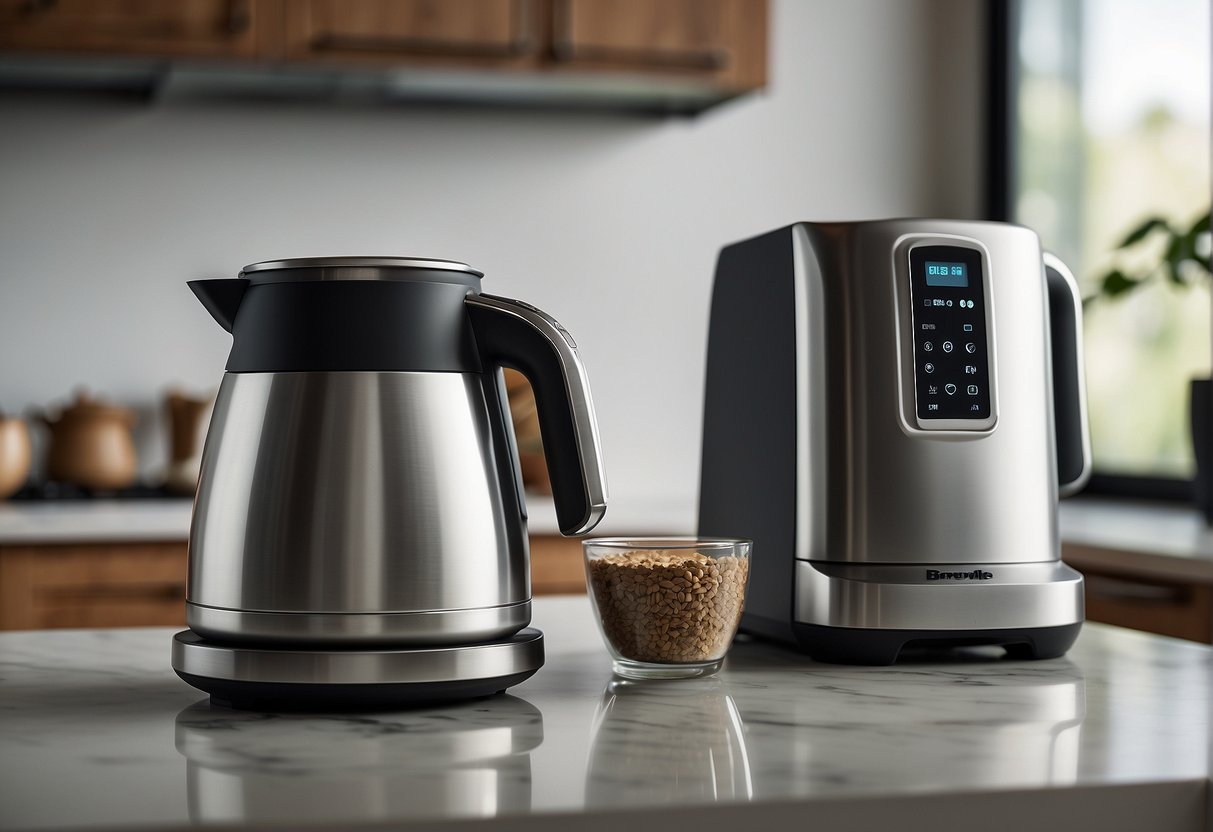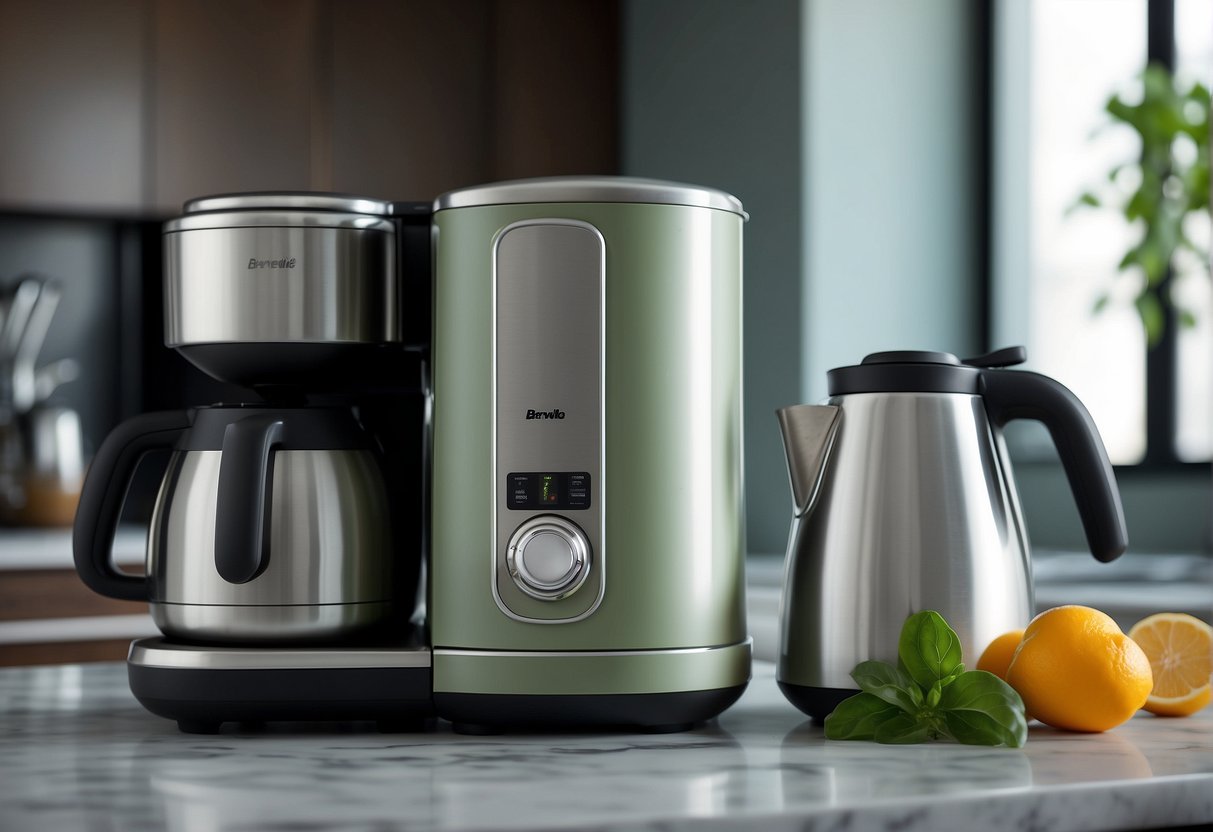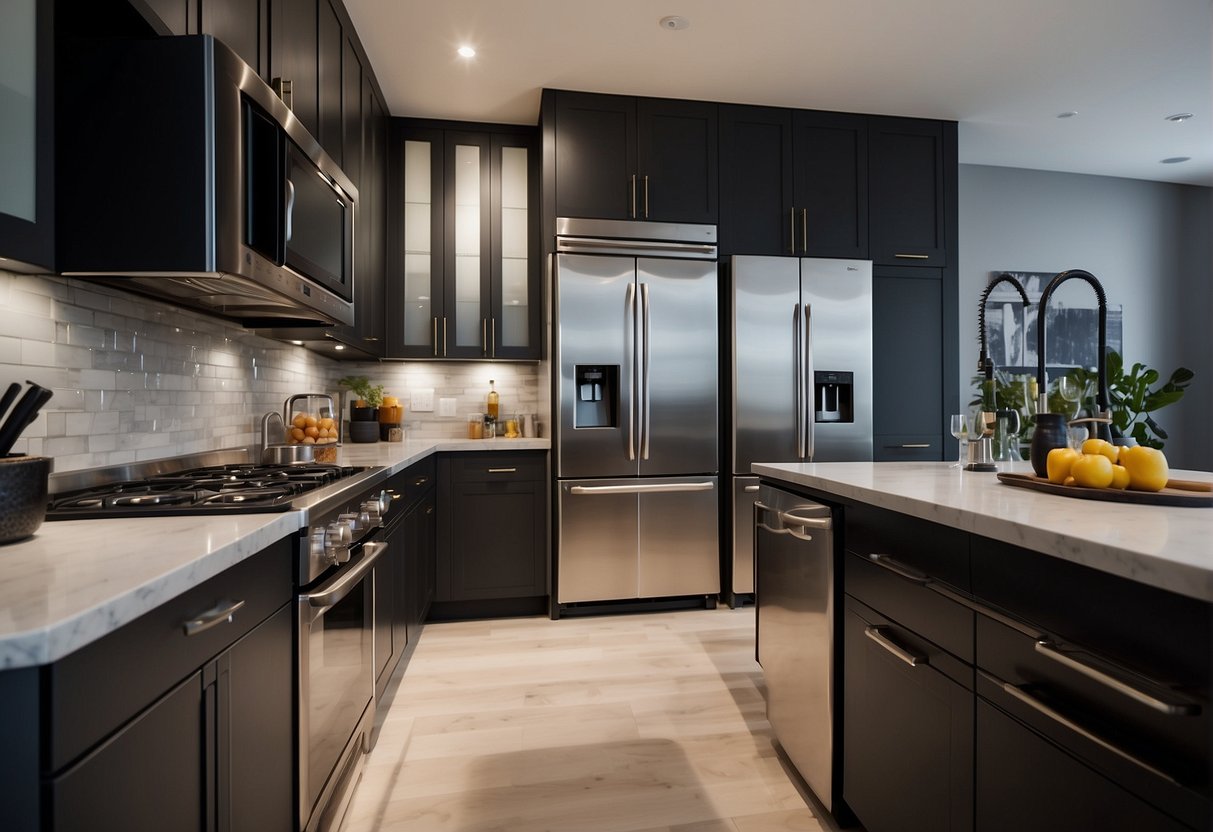When it comes to high-quality espresso machines, the names Sage and Breville often come to the fore of the conversation. Both brands are celebrated for their state-of-the-art coffee appliances that cater to connoisseurs and casual drinkers alike. The misconception that these entities are rivals stems from their distinct branding in different markets; however, they are essentially two sides of the same coin. Breville, a company that began its journey in Australia, has become synonymous with innovation in the kitchen appliance sector worldwide.

In European markets, the name Sage is used for the line of products equivalent to those Breville offers in other countries, including their renowned espresso machines. This differentiation was a strategic move to avoid confusion with an existing ‘Breville’ brand in Europe, which is unaffiliated with the Breville Group. Despite this division by name, the underlying technology, quality, and design philosophy remain consistent across the brand’s international portfolio.
Understanding the relationship between Sage and Breville is critical for consumers interested in finding a top-notch espresso machine that suits their needs. While the design and technical specifications are in harmony across both brandings, knowing that the distinction is only in name, not in quality, helps to narrow down the choices based on availability in one’s region. Whether purchasing a product labeled under Sage or Breville, customers can expect a premium experience steeped in the company’s commitment to excellence in coffee making.
Brand Overview

In this section, we’ll explore the background of both Sage and Breville, their market positions, design philosophies, product offerings, and their appeal to target consumers.
Sage: Company Background
Sage operates predominantly in the UK and European markets, with a focus on kitchen appliances that embody both function and style. The brand, which collaborates with celebrity chef Heston Blumenthal, is particularly known for its premium coffee machines aimed at the discerning coffee lover.
Breville: Company Background
Breville originated in Sydney, Australia, in 1932 and has expanded dramatically, now distributing in over 70 countries including the US and the UK. Part of the Breville Group Limited, this brand has become synonymous with innovative kitchen appliances, including a wide range of coffee makers.
Comparative Market Position
While Sage and Breville are different brands, they are owned by the Breville Group Limited and share similar market positions. Both cater to mid-to-high-end consumer segments, offering a mix of design and functionality that appeals to home cooks and coffee enthusiasts alike.
Design Philosophy and Aesthetics
Sage and Breville kitchen appliances showcase sleek design elements, often featuring stainless steel finishes. Their design philosophy centers on a combination of modern aesthetics and intuitive usability, appealing to users who appreciate contemporary kitchen appliances.
Product Range and Target Consumers
The product offerings from Sage and Breville cover a broad spectrum of kitchen appliances, including but not limited to, coffee machines, Nespresso machines, and toasters. They target home coffee makers and individuals who desire professional-grade appliances at home. The brands cater to a discerning market that values both the aesthetics and functionality of their kitchen tools.
Key Features of Espresso Machines
https://www.youtube.com/watch?v=JwoCLNqp_Yw&embed=true
When selecting an espresso machine, understanding key features such as brewing capabilities, milk frothing technology, grinder quality, and ease of maintenance is crucial for extracting the perfect espresso shot and creating barista-level beverages.
Brewing Capabilities
Espresso machines vary greatly in their brewing process, but high-quality machines often offer pre-infusion, which gently soaks the grounds before full pressure is applied. This leads to a more even extraction and a more flavorful espresso shot. Additionally, consistent temperature control is essential to protect the espresso’s body and flavor.
Milk Frothing Technology
For coffee lovers who enjoy a latte or cappuccino, the quality of the milk frother is paramount. High-end machines usually provide a milk frother that allows for adjustable milk temperature and texture, enabling the user to craft velvety milk frothing suitable for a range of milk-based drinks.
Grinder Quality and Types
The inclusion of a built-in burr grinder affords significant grind control, resulting in fresher grounds and a superior espresso. Espresso machines with a conical burr grinder offer the advantage of more precise grinding and flavor extraction, greatly affecting the end product’s taste.
Ease of Use and Cleaning
Ease of use is another important feature, with intuitive interfaces making the brewing process straightforward. Conversely, descaling and cleaning are simplified with accessible parts and automated cleaning cycles, ensuring that the coffee maker remains in top condition.
Additional Functions and Accessories
Lastly, the availability of additional functions can enhance the experience. Features like programmable settings, water filters, and a generous water tank capacity allow users to customize and optimize their coffee making. High-quality espresso machines often come with a range of accessories, such as a portafilter and different baskets, to cater to individual preferences.
Performance and Usability

In evaluating Sage and Breville appliances, particularly coffee machines, it’s crucial to discuss their performance and usability. These parameters are essential for both amateur coffee enthusiasts and experienced baristas when considering an investment in a new coffee machine.
Machine Types: Semi-Automatic vs. Fully Automatic
When comparing the Semi-Automatic espresso machines such as the Sage Barista Express and the Fully Automatic machines like the Breville Oracle Touch, there is a notable difference in the level of user input required. Semi-automatic machines afford the user more control over the brewing process, which can be a desirable feature for those looking to hone their barista skills. In contrast, fully automatic machines prioritize convenience, handling most aspects of the brewing process, which can be a significant advantage for users seeking ease of use and consistency with minimal effort.
Temperature Control and Consistency
Both the Sage Barista Pro and Breville Bambino boast a Thermocoil Heating System, which ensures rapid and precise temperature control, critical for extracting the full flavor of the coffee. Temperature stability is key to performance, and models equipped with such advanced heating systems deliver with greater consistency, a trait highly regarded by users who expect the same quality in each cup.
User Interface and Customization
The usability of both Sage and Breville machines extends to their user interfaces and customization options. Intuitive controls and clear displays contribute to an overall user-friendly experience. For example, the Breville Precision Brewer offers programmable settings to adjust brew strength, temperature, and more, catering to the nuanced preferences of users. This level of customization enables users to achieve their ideal cup with precision and ease, enhancing the daily coffee experience without the need for professional skills.
Cost Analysis
This section provides a detailed breakdown of the cost considerations when comparing Sage and Breville appliances. From the pricing strategies for various models to the long-term value and support offered by the companies, readers can gather insights on managing their investment in a high-quality kitchen appliance.
Price Range of Models
The Breville Barista Express and the Sage Bambino Plus stand as notable examples within their broad range of espresso machines, which are structured to cater to different budgets. Breville’s options, such as the Bambino Plus, start at a relatively accessible price point, whereas the Breville Oracle reflects the upper end of the scale, boasting advanced features and a correspondingly higher price tag. Similarly, Sage models mirror this pricing strategy, with options suitable for both the budget-conscious and the premium buyer.
Value for Money
Breville and Sage products, like the Breville Barista Pro and the Nespresso lines, are synonymous with durability and superior design. Consumers often weigh the cost against the expected lifespan and performance enhancements. A Breville or Sage appliance signifies not just a purchase but an investment into the quality of daily coffee experiences. Both brands maintain a reputation for crafting machines that deliver high-quality beverages consistently.
Warranty and After-Sales Service
Warranty coverage is a critical aspect of post-purchase satisfaction, with both Breville and Sage generally offering competitive warranties. The Breville Bambino Plus, for example, comes with a 2-year limited warranty. Customer service is another cornerstone, with both brands being acknowledged for reliable customer service that supports the user well beyond the initial purchase. The after-sales service offered reinforces the value proposition of both Breville and Sage, securing customer loyalty and trust.
Consumer Insights and FAQs
In this section, readers will find frequently asked questions about Sage and Breville, along with genuine user experience stories, maintenance tips, and suggestions for potential upgrades. This compilation is targeted towards providing practical insights for both prospective buyers and existing users.
Common Questions
- Are Sage and Breville the same company? Breville operates globally, while Sage products are specifically sold in European markets to avoid confusion with other brands. They are indeed different brand names for the same manufacturer known for quality coffee machines.
- Can I use pre-ground coffee with espresso machines? Many Sage and Breville espresso machines, like the Breville Bambino Plus, are compatible with pre-ground coffee, offering versatility for the coffee lover’s preferred brewing method.
User Experience Stories
- Breville Bambino Plus: Users often highlight its compact size and the quality of the espresso shot. It’s been praised for its ease of use, making it accessible even to those new to brewing a perfect cup of coffee.
- Sage Coffee Machines: Stories from European users mirror those of Breville’s, emphasizing the barista-quality performance and durability of machines like the Sage Barista Express, which includes an integrated coffee grinder.
Maintenance Tips
- Descaling: Regular descaling is crucial. Users should refer to their machine’s manual for specific instructions but expect to descale every 2-3 months to maintain optimal performance.
- Cleaning: A daily routine of cleaning the portafilter, milk frother, and drip tray ensures a fresh taste. Weekly deep cleans are advised for both Sage and Breville machines to extend their lifespan.
Upgrade Possibilities
- Water Tank Upgrades: Some users may find upgrading their machine’s water tank capacity beneficial for reduced refill frequency, enhancing the overall coffee-making experience.
- Advanced Coffee Grinders: Coffee aficionados often recommend investing in a high-quality grinder to pair with their espresso machine for a consistently superior grind and an improved espresso taste profile.
Expert Opinions and Industry Reviews
When it comes to evaluating coffee makers, industry experts often consider factors such as build quality, functionality, and the capacity to deliver a consistent cup of coffee. In the debate between Sage and Breville, it appears experts acknowledge the machines are virtually identical, with differences primarily branding in different regions—Sage being targeted at the UK and Europe, and Breville catering to the rest of the world. For example, Home Coffee Expert highlights the confusion consumers might face due to the variety of brands available.
Baristas and coffee aficionados tend to appreciate the precision brewer models offered by both brands. These machines are noted for their temperature control and the ability to customize coffee brewing to different profiles, making them a popular topic in expert reviews.
The entities across different platforms provide insight into the similarities between Sage and Breville products. Homes & Gardens emphasizes the close resemblance between the appliances from both brands, which includes high-quality construction and user-centric features.
Contrasting cost differences are noted by consumers as per discussions on Coffee Forums UK, yet industry reviews often justify this with the premium materials and technology used in both brands.
To summarize expert perspectives:
- Build Quality: Both brands are recognized for high-quality products.
- Functional Capabilities: Precision brewers enjoy particular praise for their customizable settings.
- Brand Similarity: Cited by multiple sources, including Roasty Coffee, the products are almost identical between Sage and Breville, separated largely by marketing strategy.
- Price Point and Value: While initially confusing, consumers generally find the price reflects the quality and features offered.
